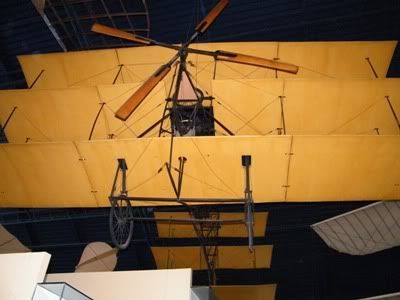A blog about the Edwardian era in the UK - objects, buildings, people, literature, film and all other aspects of the Edwardian era (covering 1901-1919)

Saturday, 8 October 2011
Roe I Triplane, 1909
The Science Museum in South Kensington, London, has arguably the most important collection of aeroplanes in the world. There are many famous aircraft here - the first British jet aircraft, the Vickers Vimy that was the first aircraft to cross the Atlantic non-stop in 1919, Schneider Trophy winning Schneider S.6 floatplane, and a large collection of original early flying machines (they even had the Wright Brothers Flyer from 1903 until the Smithsonian finally acquired it from the Wright Brothers on the proviso they would admit it was the first flight of a controllable, human piloted heavier than air craft, but that's another story). The smell as you enter the Flight Gallery is the first thing you notice - old wood, linen and dope creates a unique and evocative odour of early flight.
The aircraft are hung from the roof in close proximity to each other in a large, poorly lit room, which is never good for displaying aircraft or for photographing them, but it's still wonderful to see them. This aircraft is a Roe I Triplane, usually referred to as an Avro Triplane, built by Alliott Verdon Roe, the first all-British aircraft to fly (British construction with British engine). On June 5 1909, powered by a 6hp JAP Motorcycle engine, the first Roe I Triplane, nicknamed 'The Blues', made it's first of a series of short hops on Walthamstow Marshes in Essex (now in the London Borough of Waltham Forest), later flying for further and further distances. A further three Roe I Triplanes were built, and it's not known which one this is. Interestingly, the wings of the first Roe I Triplane weren't covered with linen, but paper, owing to AV Roe's financial hardship at the time
Subscribe to:
Post Comments (Atom)


No comments:
Post a Comment